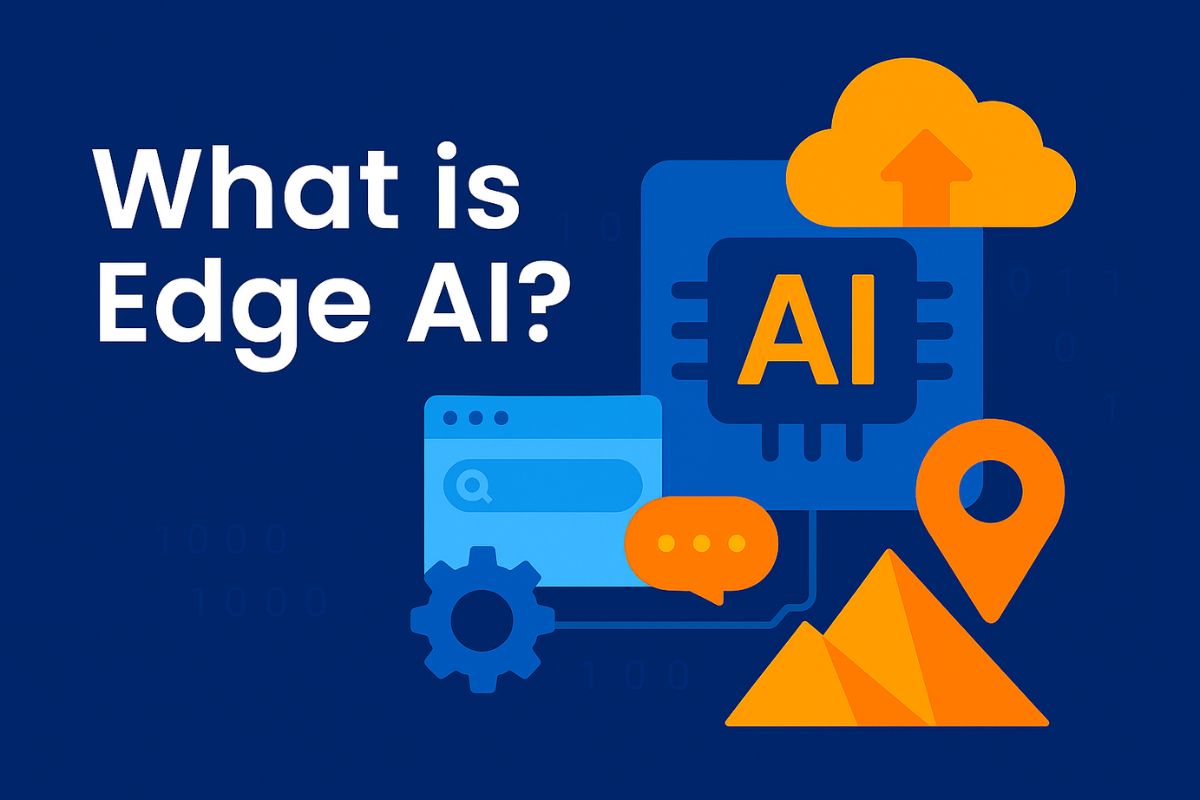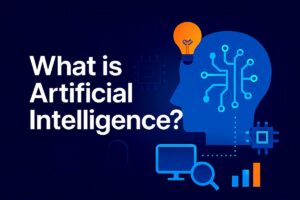Edge AI is the combination of artificial intelligence and edge computing, enabling smart devices to process data locally without relying on the cloud. It powers faster decision-making, better privacy, and real-time responses in devices like drones, autonomous vehicles, healthcare monitors, and more. This blog explores how Edge AI works, its benefits, applications, and why it’s a key driver of the future of smart technology.
Edge AI is transforming the way smart devices operate in real time — without waiting for cloud servers. From smartwatches to self-driving cars, Edge AI brings artificial intelligence directly to where the data is created: at the “edge” of the network. In this guide, you’ll learn what Edge AI is, how it works, real-world use cases, benefits, challenges, and why it’s shaping the next generation of intelligent technology.
What is Edge AI?
Definition & Concept
Edge AI combines artificial intelligence (AI) with edge computing, allowing AI algorithms to be processed on local devices (edge devices) instead of relying on cloud-based servers.
How It Works (Technical Workflow)
- Sensors and devices collect raw data
- Lightweight AI models (e.g., TensorFlow Lite) run locally
- Results are processed and acted on instantly
- Minimal cloud dependency (data only sent if needed)
Benefits of Edge AI Over Traditional Cloud AI
Faster Decision-Making & Low Latency
No need to send data to distant servers → ideal for real-time applications (e.g., drones, robots).
Enhanced Privacy & Security
Sensitive data stays on the device → useful for healthcare, finance, etc.
Cost Efficiency & Offline Capability
Reduces cloud bandwidth and cost → edge devices can function without internet access.
Top Real-World Applications of Edge AI in 2025
Smart Cities & Surveillance
Traffic control, facial recognition, and real-time alerts using local cameras with AI chips.
Autonomous Vehicles & Drones
Self-driving cars process surroundings instantly without waiting for the cloud.
Industrial Automation (IIoT)
Predictive maintenance, quality control in factories using edge-powered sensors.
Healthcare & Wearables
Smartwatches, fitness bands, and medical monitors with on-device diagnostics.
Retail & Customer Analytics
In-store facial recognition, shelf analytics, and real-time customer behavior tracking.
Edge AI vs Cloud AI
| Feature | Edge AI | Cloud AI |
|---|---|---|
| Processing Location | On-device (local) | Remote data centers |
| Latency | Ultra-low | Moderate to high |
| Internet Dependency | Can work offline | Requires stable internet |
| Privacy & Security | Higher (data stays local) | Lower (data travels over net) |
| Use Case Fit | Real-time, mobile, remote areas | Heavy computation, analytics |
How Edge AI is Powering the Future of Smart Technology
AI Chips & Hardware Innovations
- AI accelerators (e.g., NVIDIA Jetson, Google Coral, Apple Neural Engine)
- Efficient chipsets with low power consumption
Emerging Tech Synergies (5G, IoT, TinyML)
- 5G enables faster edge communication
- TinyML allows micro-controllers to run ML models
- Integration with IoT for real-time, responsive ecosystems
Challenges in Adopting Edge AI
Hardware Limitations
Edge devices have limited memory, storage, and compute power
Model Optimization
Need for quantization, pruning, and compression techniques to fit models on small chips
Scalability & Maintenance
Harder to update and manage models deployed across thousands of devices
Expert Tips for Getting Started with Edge AI
- Start with TensorFlow Lite, PyTorch Mobile, or Edge Impulse
- Use datasets relevant to your device’s context
- Test latency and memory usage frequently
- Combine with microcontrollers like Raspberry Pi, Arduino, etc.
Free Tools & Resources for Edge AI Development
- TensorFlow Lite – Run ML models on mobile and embedded devices
- Edge Impulse – Platform to build TinyML models for edge
- NVIDIA Jetson Nano – Dev kit for edge AI projects
- Google Coral – AI edge devices powered by Google’s Edge TPU
Conclusion
Edge AI is revolutionizing how we interact with technology — from homes to hospitals, from cities to factories. As devices become smarter and more independent, Edge AI offers speed, security, and innovation at the edge of every network. Whether you’re a student, developer, or decision-maker, it’s time to explore this future-ready tech and harness its potential.
💬 Enjoyed this guide? Share it with others or drop your thoughts in the comments!
FAQs
1. What is Edge AI in simple words?
Edge AI means running artificial intelligence (AI) models directly on devices like smartphones, cameras, or sensors — instead of sending data to the cloud.
2. What is an example of Edge AI?
A smart camera that detects motion or faces locally and alerts you instantly without cloud processing.
3. What are the benefits of Edge AI?
Faster response time, better privacy, offline functionality, and reduced bandwidth costs.
4. Is Edge AI better than Cloud AI?
Not always. Edge AI is better for real-time, mobile, and privacy-sensitive tasks, while cloud AI is better for complex, large-scale processing.
5. What is the future of Edge AI?
Edge AI is expected to grow rapidly with 5G, IoT, and TinyML, and will play a crucial role in autonomous systems, smart cities, and healthcare.
6. How is Edge AI used in healthcare?
Wearables and medical devices use Edge AI to monitor health metrics in real time without internet reliance.
7. What programming languages are used in Edge AI?
Python, C++, Java, and frameworks like TensorFlow Lite, PyTorch Mobile, and ONNX.



